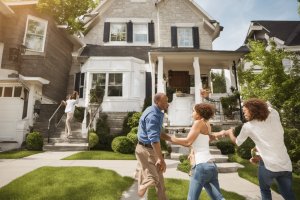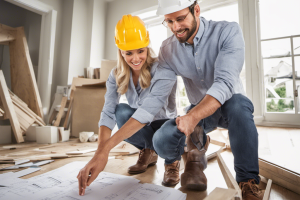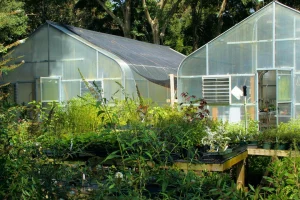
Introduction
Sustainable homeownership is more than a trend – it's a lifestyle change that significantly benefits homeowners and the environment. Homeowners worldwide rapidly embrace green living, aiming for energy efficiency, reduced carbon footprint, and a healthier living environment. This pillar post provides an in-depth understanding of sustainable homeownership, guiding homeowners to make informed decisions and meaningful home changes.
Understanding Sustainable Homeownership
Sustainable homeownership enhances a home's efficiency and environmental performance, reduces its ecological impact, and creates a healthier and more comfortable living environment. It encompasses many home improvements and practices, such as energy-efficient appliances, renewable energy systems, water-saving fixtures, sustainable construction materials, waste reduction, etc.
While sustainable homeownership may require an upfront investment, the long-term benefits are noteworthy. It significantly reduces utility bills, increases property value, and improves indoor air quality, leading to a healthier lifestyle. More importantly, it contributes to global environmental conservation efforts, aiding the fight against climate change.
The concept of sustainable homeownership aligns with the broader sustainability goals, including economic viability, social equity, and environmental protection. Therefore, sustainable homeownership is not just about personal gains but is part of a collective responsibility toward a sustainable future.
The following sections will delve into different aspects of sustainable homeownership, providing practical tips, real-life case studies, potential challenges, and the future outlook of this green living practice.
The Importance of Energy Efficiency in Homes
A key aspect of sustainable homeownership lies in energy efficiency. By making homes more energy-efficient, homeowners can reduce their carbon footprint, decrease utility costs, and create a more comfortable living space.
Implementing energy-efficient measures can come in various forms. For instance, installing Energy Star certified appliances can reduce energy consumption by up to 30%. Similarly, improving insulation and sealing windows and doors can prevent heat loss and reduce heating and cooling costs.
Renewable energy systems like solar panels and wind turbines have become increasingly accessible to homeowners. These systems provide a renewable power source, reducing reliance on fossil fuels and decreasing greenhouse gas emissions.
Moreover, innovative home technologies (Ecobusiness) have introduced a new dimension to energy efficiency. From smart thermostats that learn your daily routines and adjust temperatures accordingly to automated lighting systems that switch off when no one is around, these intelligent devices contribute to significant energy savings while improving the home's comfort level.
Energy efficiency is a win-win for homeowners and the environment. It reduces energy bills and carbon emissions while improving the living conditions within the home. Therefore, it should be a top priority for anyone aiming for sustainable homeownership. Stay tuned for more insights on other facets of sustainable homeownership.
Various Sustainable Energy Sources for Homes
Transitioning to sustainable energy sources is an effective strategy for reducing your carbon footprint and moving towards sustainable homeownership. With advancements in technology and more accessible options, homeowners now have a variety of options to choose from.
- Solar power is one of the most popular renewable energy sources for homes. Solar panels installed on rooftops can generate electricity for household use, and excess energy can be stored in a battery system for use at night or during periods of high energy demand. Solar power is a reliable and cost-effective solution, offering significant savings on electricity bills over time.
- Although less common in residential settings, wind energy can be a viable option for homeowners with enough land and a suitable climate. Small wind turbines can be installed on the property, converting wind energy into electricity. As with solar, any excess power can be stored in a battery system or sold back to the grid in some locations.
- Geothermal energy is another innovative solution, providing heating and cooling solutions by tapping into the earth's consistent temperatures. Geothermal systems use underground pipes to exchange heat with the earth, providing a highly efficient method of climate control.
- Hydropower can also be a solution for homes near a flowing water source. Micro-hydropower systems can generate electricity by harnessing the energy of flowing or falling water.
- Biomass, such as wood pellets and biogas, can also be used as sustainable energy sources. These organic materials can be burned or decomposed to create heat or electricity.
Incorporating sustainable energy sources into a home contributes to a healthier environment and offers economic advantages, making it a smart choice for homeowners interested in sustainability.
Eco-friendly Construction and Design Ideas
Building an eco-friendly home contributes to a healthier planet, creating a comfortable and aesthetically pleasing environment that aligns with modern architectural trends. Here are some creative eco-friendly construction and design ideas for a sustainable home.
Firstly, the use of sustainable building materials is paramount. Recycled, reclaimed, and natural materials reduce the environmental impact and add a unique aesthetic touch. Bamboo, cork, and recycled steel are among the materials that are sustainable but also durable and stylish.
Energy-efficient design is another crucial aspect of eco-friendly construction. This includes optimizing the home’s orientation for natural light and temperature regulation, implementing passive solar design, and incorporating high-efficiency windows and insulation to reduce energy consumption.
Incorporating green spaces into the design is another excellent way to improve the home's sustainability. Green roofs and walls provide superior insulation, contribute to air purification, and create a serene, natural atmosphere.
Water conservation measures are also essential in an eco-friendly home design. Rainwater harvesting systems, greywater recycling, and using water-efficient fixtures can significantly reduce water usage.
Integrating renewable energy systems, such as solar panels or wind turbines, can increase the home's energy efficiency. These systems can provide clean power for the home and may even generate excess electricity that can be sold back to the grid.
Regarding outdoor improvements, consider using composite decking made from recycled materials, installing LED lighting, and planting native plants that require less water and care.
These design ideas represent just some of how homeowners can build and live sustainably, proving that style and sustainability can go hand in hand.
Maintaining a Sustainable Home: From Repairs to Cleaning
Sustainability doesn't stop at homeownership's design and construction stage; it extends to everyday home maintenance, which is just as crucial to a sustainable lifestyle. Let's dive into some intriguing methods of maintaining a sustainable home, from eco-conscious repairs to green cleaning routines.
A significant aspect of maintaining a sustainable home involves routine repairs and maintenance necessary to ensure the efficient functioning of the home's systems and components. Homeowners are increasingly leaning towards eco-friendly repair strategies. This includes opting for recycled or sustainably sourced replacement parts, utilizing energy-efficient tools, and choosing non-toxic sealants, adhesives, and finishes. These strategies promote the home's longevity and contribute to reducing the home's carbon footprint.
In addition, sustainable cleaning practices have rapidly gained traction among homeowners. Instead of chemical-laden commercial cleaning products, more people are turning to natural cleaning alternatives. Ingredients like vinegar, baking soda, and essential oils serve as potent cleaning agents without the environmental harm of conventional cleaners. Not only do these practices promote healthier indoor air quality, but they also prevent harmful substances from entering our water systems.
Homeowners can also undertake eco-friendly landscaping and gardening to maintain a sustainable outdoor living space. Composting, using native plants, reducing lawn space, and integrating rainwater harvesting systems are all effective methods of sustainable yard maintenance.
Lastly, keeping a home's energy-efficient systems in good working order is essential to ensure they operate at their maximum efficiency. Regular servicing of solar panels, wind turbines, and energy-efficient appliances can prolong their lifespan and ensure optimal performance.
In essence, maintaining a sustainable home goes beyond the bricks and mortar. It involves conscious choices about repairing, cleaning, and caring for our homes. Every small step in this direction contributes to a healthier planet and creates a safe, clean, and inviting living space.
Investing in Smart Home Technologies for Better Sustainability
In the age of advanced technology, smart homes are no longer a futuristic concept; they are a reality that is revolutionizing the face of sustainability in homeownership. With increasing numbers of homeowners recognizing the ecological and financial benefits of sustainable living, investing in innovative home technologies has become a lucrative and impactful avenue for enhancing home sustainability.
As outlined by Treehugger, smart home technologies encompass a range of devices and systems that automate and optimize various aspects of home operation, from lighting and temperature control to security and energy management. By integrating these technologies into their homes, homeowners can significantly reduce their energy usage and carbon footprint, promoting sustainable living and yielding long-term cost savings.
According to an article on IT Online, smart home technologies are helping the environment in more ways than one. Smart thermostats, for instance, learn the homeowners' routines and adjust the heating and cooling systems accordingly to reduce energy wastage. Likewise, smart lighting systems automatically dim or turn off the lights when no one is in the room, saving significant amounts of electricity.
Investing in smart home technologies is not just about enhancing the sustainability of homes; it's also a financially rewarding move. A recent survey highlighted by Morningstar showed that consumers appreciate the benefits of smart home products. Smart technologies can lead to substantial energy savings despite the initial investment, offsetting the initial cost over time.
An insightful piece by Unsustainable Magazine shows how investing in smart home technologies contributes to a sustainable lifestyle. From automated blinds that control sunlight exposure to smart irrigation systems that optimize water use, every element works towards a common goal: creating a home that's not just intelligent but sustainable as well.
Control4 also highlights the impact of smart home technology on promoting a sustainable lifestyle. These technologies allow homeowners to monitor their consumption patterns and adapt their behaviors to minimize wastage.
Investing in smart home technologies can significantly enhance the sustainability of a home, making it a wise decision from both an environmental and financial perspective. As we move towards a future where sustainability is paramount, smart homes will undoubtedly play a critical role in shaping our residential landscapes.
Real-life Stories or Case Studies of Sustainable Home Ownership:
To truly appreciate the benefits of sustainable home improvements, it's essential to delve into real-life stories and case studies that highlight the transformation and benefits experienced by homeowners.
For example, Earth.org showcases several inspiring stories of sustainable housing from around the globe. These homes utilize many green technologies and strategies, from solar power and rainwater harvesting to passive heating and cooling. Their owners have not only reduced their carbon footprints but have also significantly cut down their utility costs.
Moreover, Smart Cities Dive discusses three unique cases where affordable housing was made sustainable. In these examples, sustainability was about protecting the environment and making living spaces more affordable and comfortable for residents.
Finally, SunPower's partnership with Habitat for Humanity is another heartening case study. Together, they're helping to create sustainable housing for low-income families by providing solar electricity solutions. This initiative reduces carbon emissions and significantly lowers electricity costs for needy families, exemplifying the potential of green improvements in creating affordable, sustainable living spaces.
Future Trends in Sustainable Home Ownership
As we delve into the realms of the future, sustainable homeownership is set to undergo a dramatic transformation. With the rapid evolution of technology and growing awareness about environmental conservation, new trends are emerging in the sustainable housing sector. Drawing insights from Buildium, Domino, HIRI, and several other sources, let's peek into the crystal ball to see the future of sustainable homes.
A significant trend likely to shape the future of sustainable homeownership is the increase in energy-efficient technologies, as highlighted by Green and Prosperous. From energy-saving appliances and smart home systems to solar panels and wind turbines, homeowners will likely continue investing in technologies that reduce energy consumption and promote sustainability.
Rex Montreal Estate and Inman point out that another burgeoning trend is using sustainable building materials in construction. From recycled plastics to sustainably sourced timber, the future of sustainable homeownership lies in constructing not only energy-efficient homes but also made from materials that have a low impact on the environment.
Home energy retrofits are another trend to look out for, as this Forbes article discusses. These retrofits involve upgrading older, less efficient home systems with more energy-efficient alternatives, boosting a home's sustainability quotient. As the demand for these services increases, so will the availability of new technologies, jobs, and a cleaner world.
Lastly, the future of sustainable homeownership is also likely to shift towards smaller, more efficient living spaces. As homeowners realize that bigger is not always better, the emphasis will go to optimizing space utilization and designing homes that meet their needs without wasting resources.
In essence, the future of sustainable homeownership looks promising and exciting. With the continual emergence of innovative technologies, construction methods, and living practices, sustainable homeownership is poised to be not just a trend but a new standard for residential living. As we look ahead, it's clear that sustainability will continue to be at the heart of home ownership, shaping our homes and lifestyles in ways we are only beginning to imagine.

James Smith is our editor. He is an accomplished and versatile news writer with over a decade of experience covering a wide range of topics, including politics, business, and real estate. Throughout his career, James has been dedicated to uncovering the truth and presenting unbiased, factual reporting to his audience.







